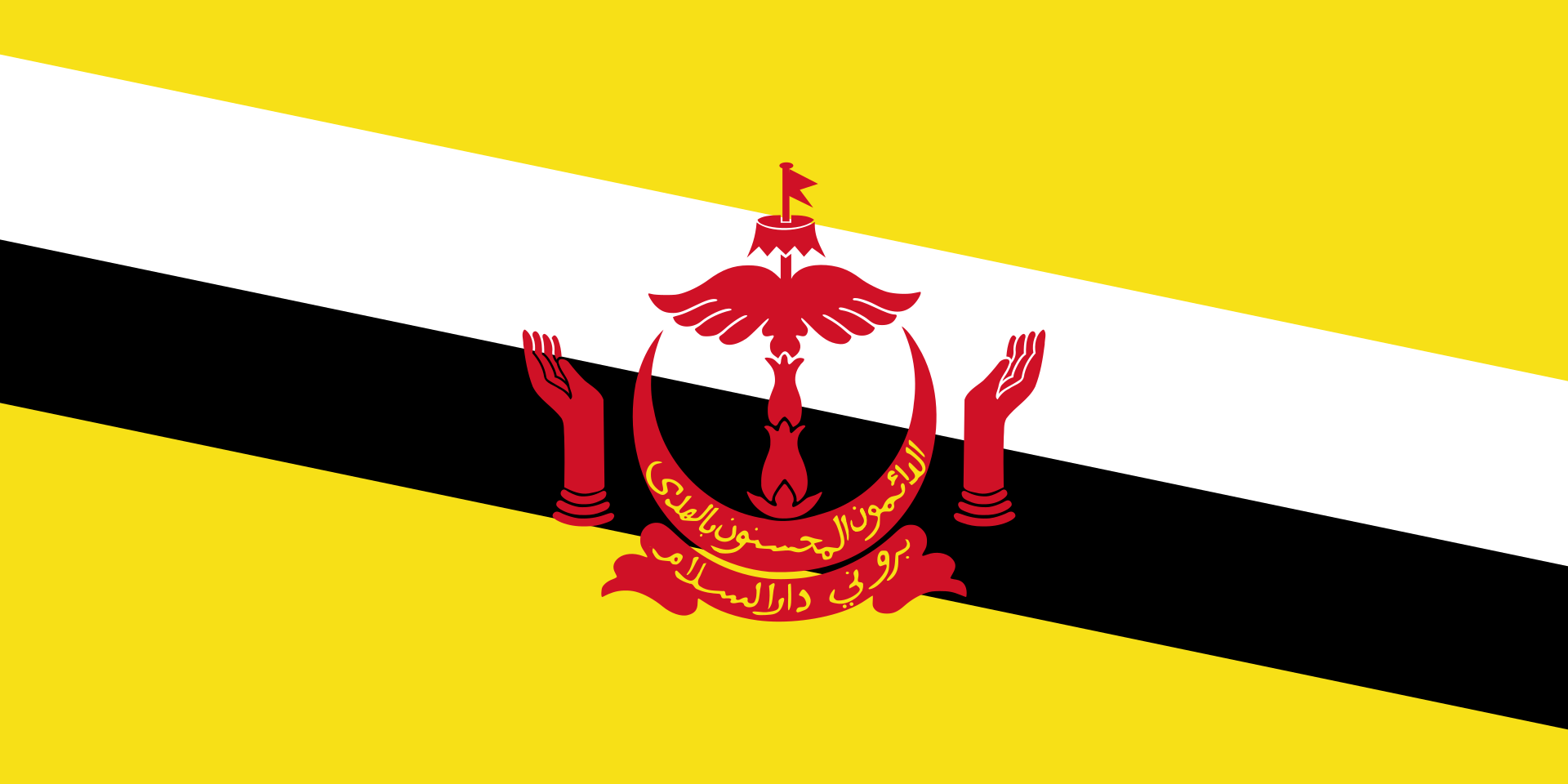The flag of Brunei is a striking design that reflects the nation’s monarchy, its Islamic heritage, and its historical significance. The flag was officially adopted on September 29, 1959, when Brunei gained self-governance, and it continued as the national flag after full independence from the United Kingdom on January 1, 1984.
Design and Elements
- Main Colors: Yellow, white, black, and red.
- Yellow Field: The flag’s background is a bright yellow field, which is the traditional color of royalty in Southeast Asia and symbolizes the Sultan of Brunei.
- Diagonal Stripes: Two diagonal stripes run across the flag from the upper hoist side to the lower fly side:
- White Stripe: Positioned above the black stripe.
- Black Stripe: Located below the white stripe.
- National Emblem (Coat of Arms): Centered on the flag is the red national emblem of Brunei, which consists of several elements:
- Crescent: Represents Islam, the dominant religion of the country.
- Parasol (Umbrella): A symbol of the monarchy and the protection provided by the Sultan.
- Hands: Two upward-facing hands on either side of the emblem represent the benevolence of the government and the protection of the people.
- Banner: Below the crescent, there is a banner that bears the national motto in Arabic: “Always in service with God’s guidance.”
- Inscription: The inscription on the crescent reads, “State of Brunei, Abode of Peace.”
Symbolism
- Yellow Field: Represents the Sultan of Brunei, as yellow is the traditional color associated with royalty in the region.
- White and Black Stripes: Historically, these stripes represent the chief ministers of Brunei, known as the Pengiran Bendahara (Prime Minister) and the Pengiran Pemancha (Defense Minister).
- Emblem: Reflects the country’s commitment to Islamic values, the monarchy, and the well-being of its people.
Proportions
- The flag has a 1:2 ratio, meaning it is twice as long as it is tall.
Historical Context
- The flag’s design elements reflect Brunei’s Islamic faith and the authority of the Sultan, who has been the central figure in the country’s governance and cultural identity for centuries.
- The elements of the national emblem highlight Brunei’s royal heritage and the Sultan’s role as a protector and benefactor of the people.
The flag of Brunei serves as a powerful symbol of the nation’s royal legacy, Islamic heritage, and the close relationship between the monarchy and its citizens.
